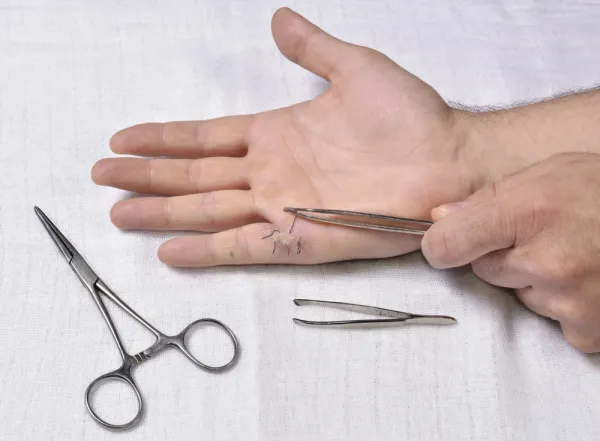Internal Medicine Coding Alert
Suture Removal

Question: Our internist recently performed suture removal in the office for an established patient who had undergone repair of a superficial wound to the scalp that he sustained during a fall when he had gone hiking when on vacation. The patient returned home and presented to our provider for suture removal. Should I report 15851 for the suture removal? And should I use modifier 52, as no anesthesia was used for the procedure?
California Subscriber
Answer: Although the CPT® code 15851 (Removal of sutures under anesthesia [other than local], other surgeon) seems to be an ideal choice for the case scenario, you cannot report 15851 if your internist performed the removal of sutures without the use of anesthesia. The codes 15850 (Removal of sutures under anesthesia [other than local], same surgeon) and 15851 should be used for suture removal procedures only when a provider performs the removal of sutures with the use of general anesthesia.
You also cannot append modifier 52 (Reduced services) to 15851 to indicate to the payer that there was a reduced service because anesthesia was not used during the procedure.
So, it is best to report the services of your physician by using an E/M code. Since you have mentioned that the patient has been previously under your internist’s care for other issues and is an established patient, you can report the service performed using an established patient E/M code such as 99212 or 99213 (Office or other outpatient visit for the evaluation and management of an established patient…).
If the patient is covered under insurance other than Medicare, you can also consider using S0630 (Removal of sutures; by a physician other than the physician who originally closed the wound) to let the payer know that your provider is removing sutures placed by another physician. “S” codes are temporary, national codes for non-Medicare payers. But, before you report this code, check the payer’s guidelines to see if S0630 is a covered service, or else your claim might get denied. In case the payer is not covering the code, you can just resort to using an E/M code, as described above.
Related Articles
Internal Medicine Coding Alert
- ICD-10 Claims Processing:
Denials for Immunization Encounters To Be Readjusted Soon
Good news: You now stand better chance for winning appeals. If you have been recently [...] - ICD-10:
Begin A Fresh Phase of ICD-10 Training After Implementation
Coders, clinicians must continue learning ICD-10 coding. With all of the delays to the transition [...] - Diagnosis Coding:
Utilize The Grace Period To Strengthen ICD-10 Implementation
Be ready to use ICD-10 or claims won’t fly. Amid the ocean of information CMS [...] - Compliance:
CMS: Inaccurate E/M Coding Remains a Growing Problem
Part B error rate is worse this year than last. No matter where you look, [...] - Reader Question:
Report Site Specific Codes for Abscess Drainage
Question: Our internal medicine physician recently performed incision and drainage of a finger abscess. Should I [...] - You Be the Coder:
Suture Removal
Question: Our internist recently performed suture removal in the office for an established patient who [...]




